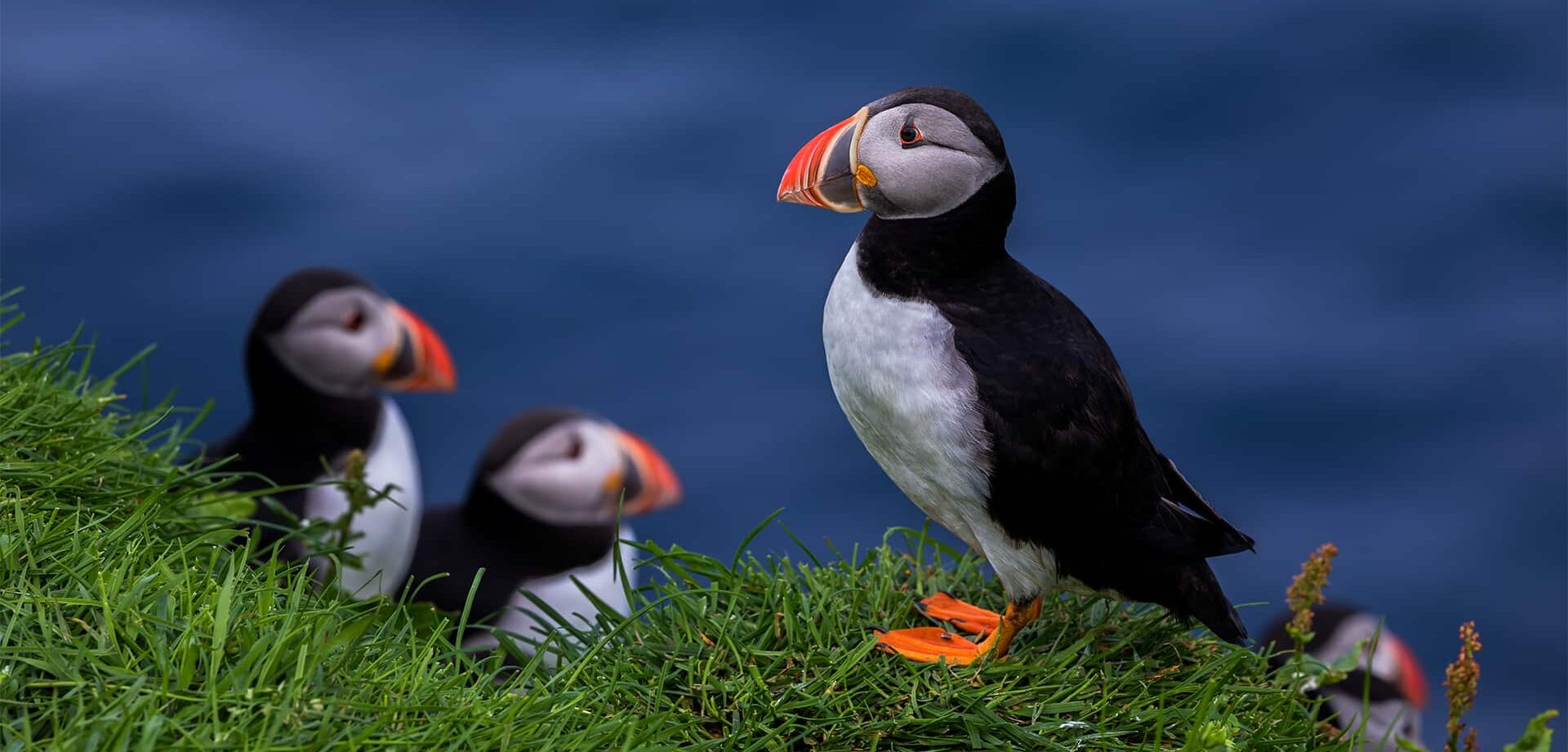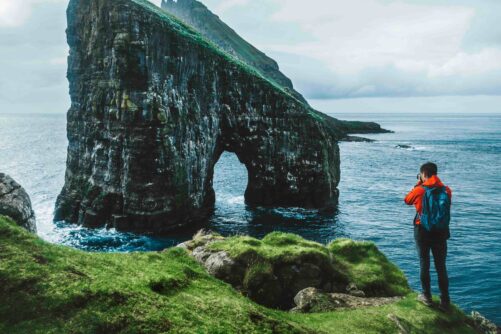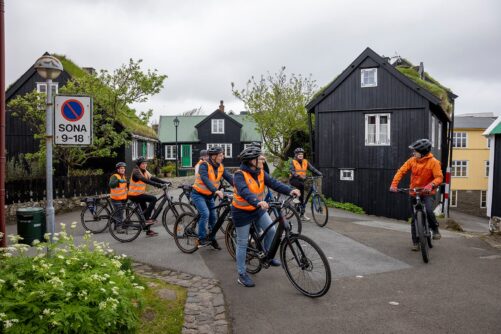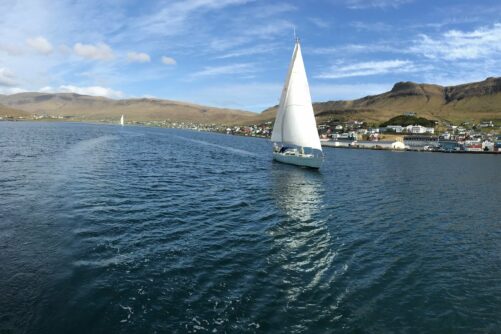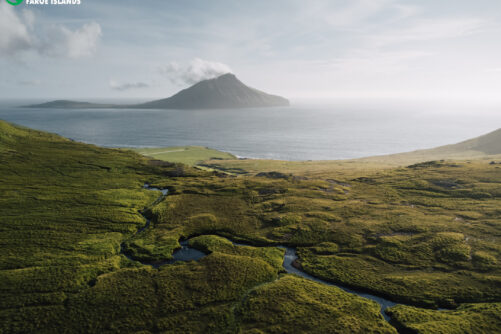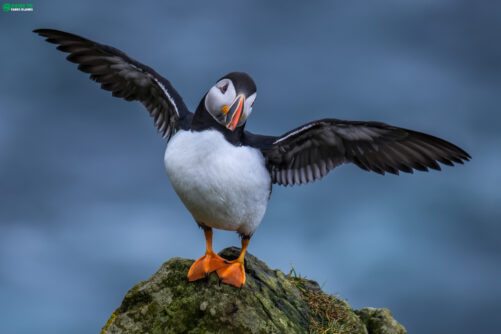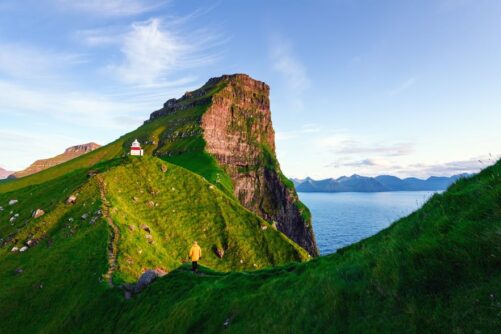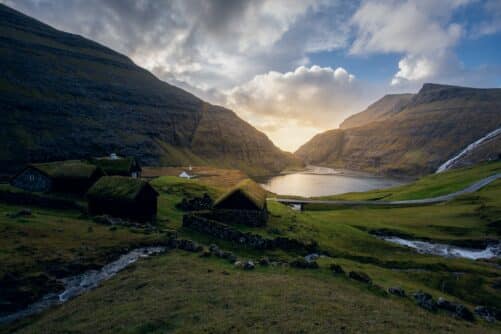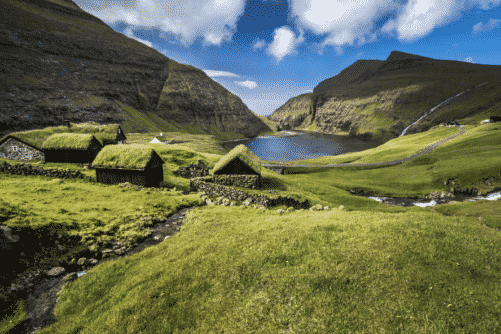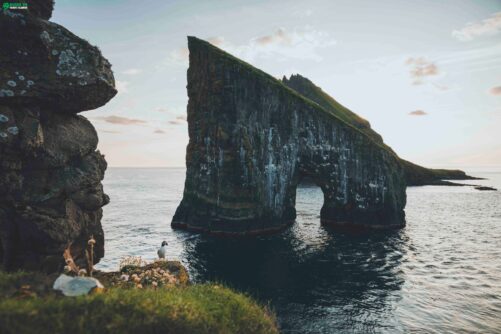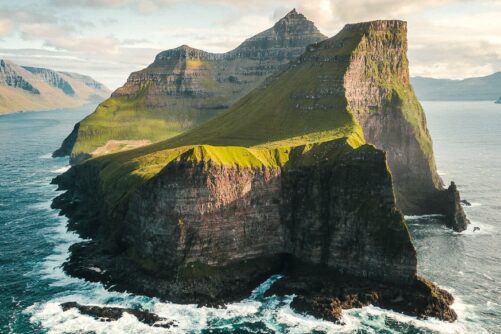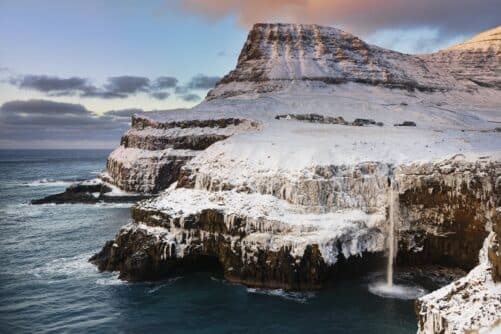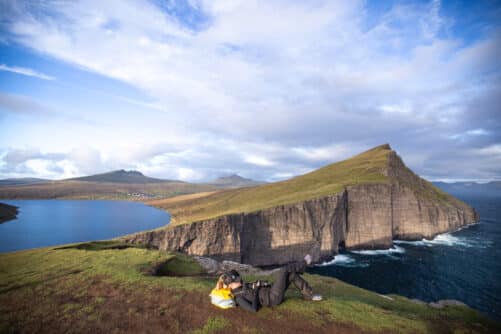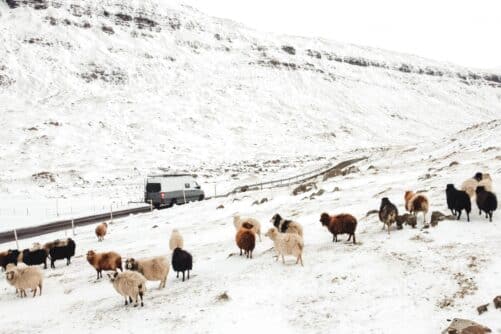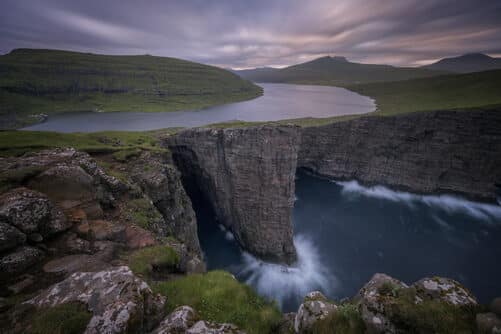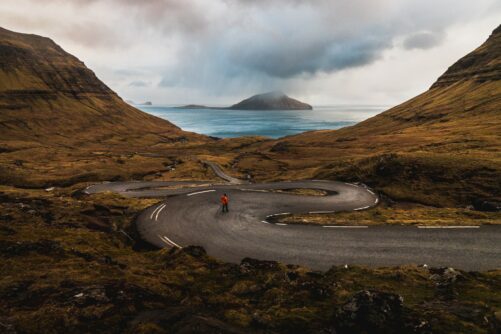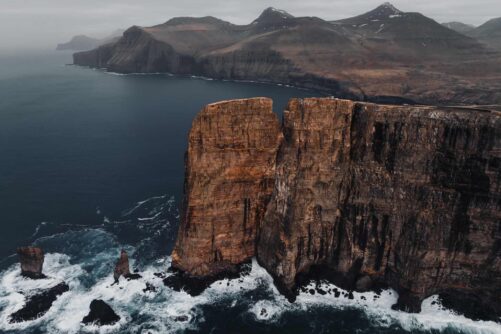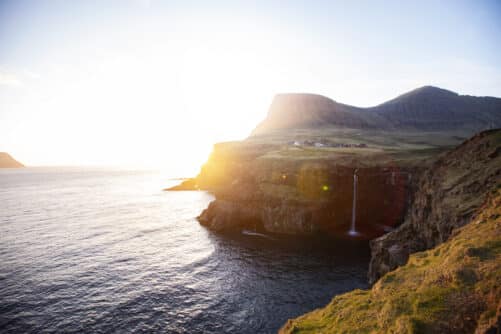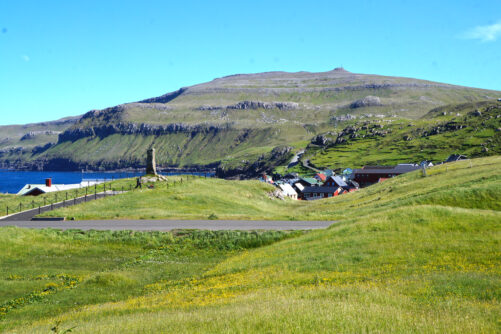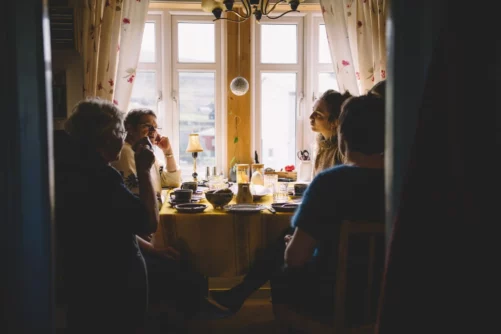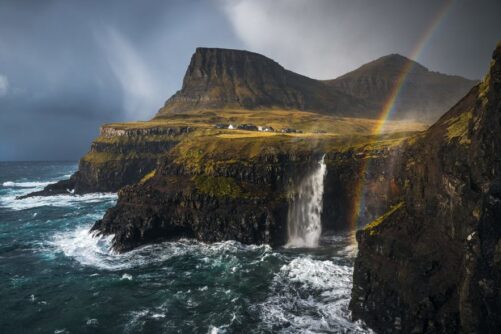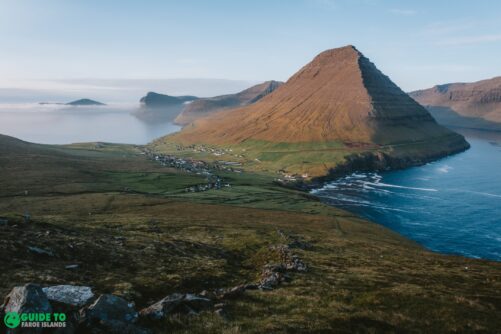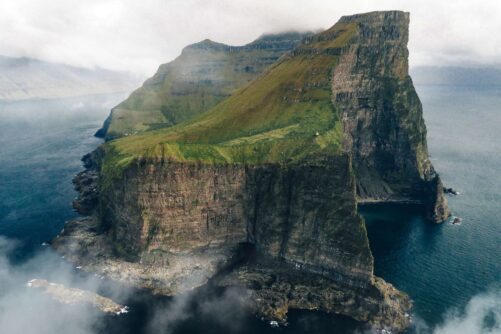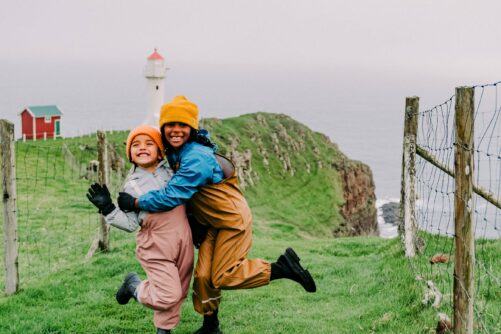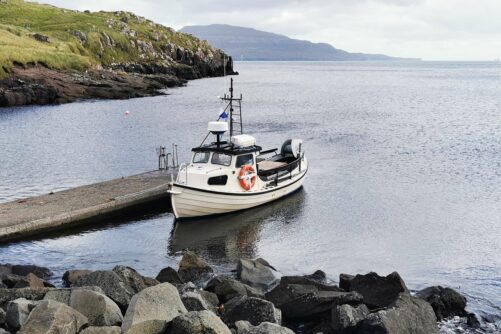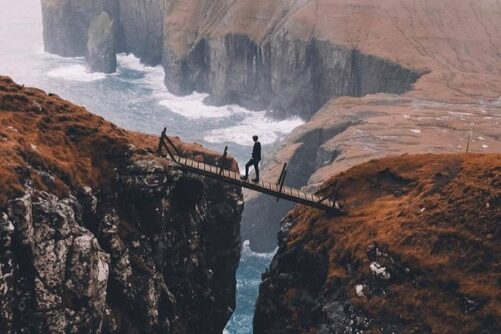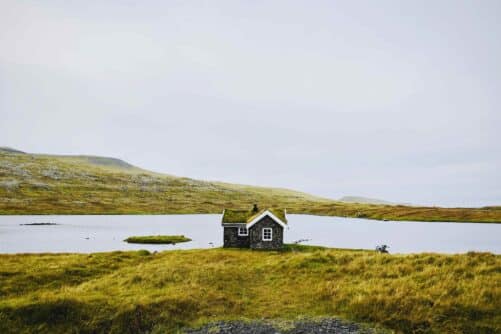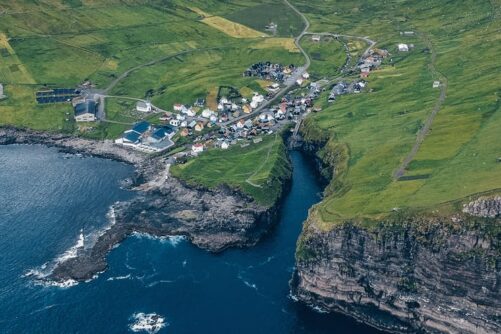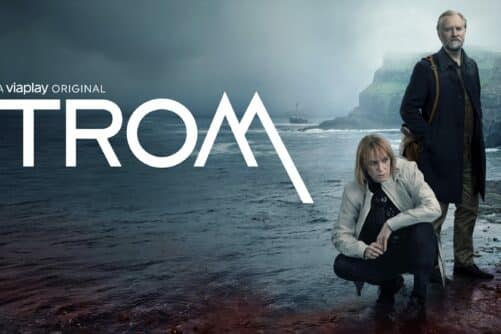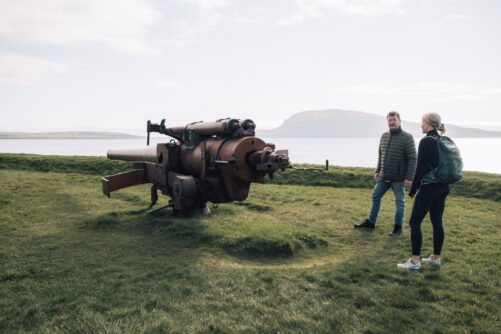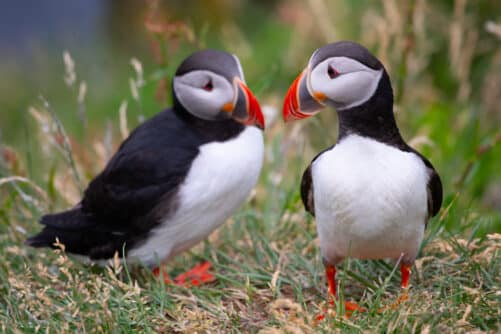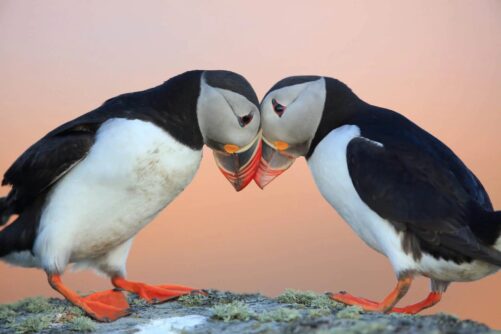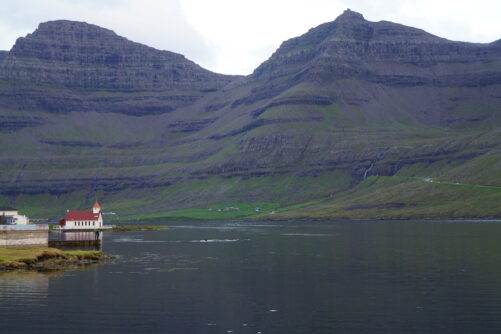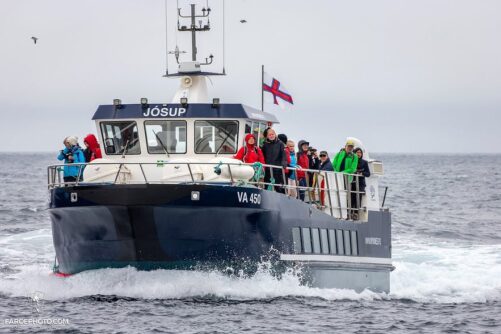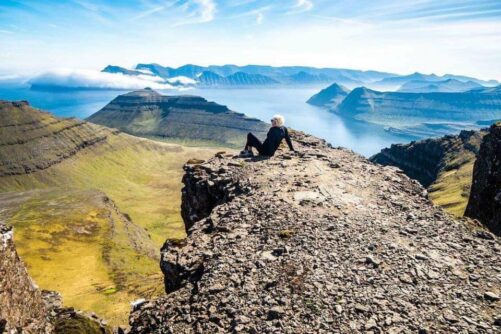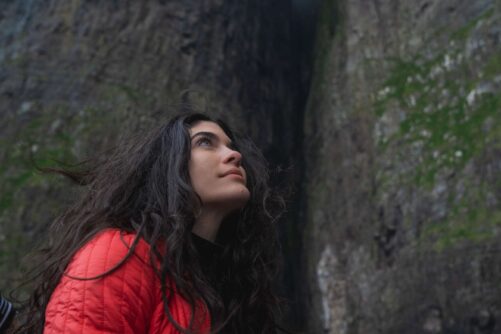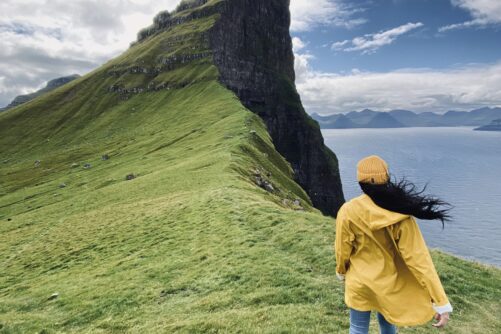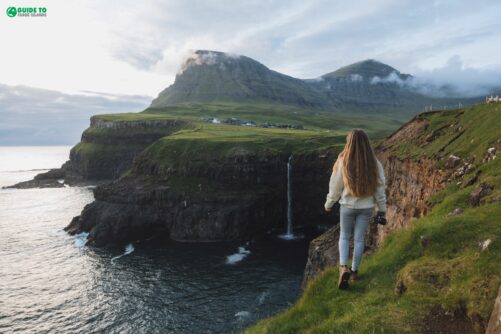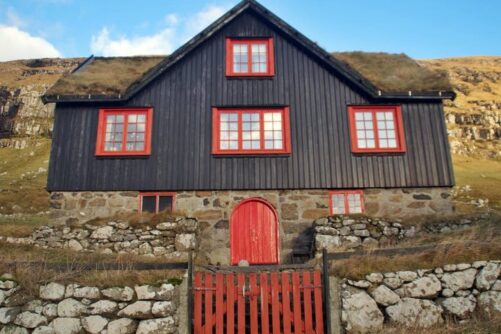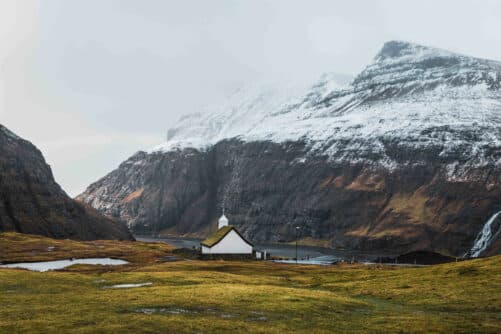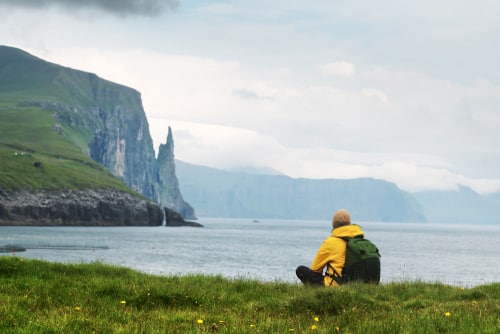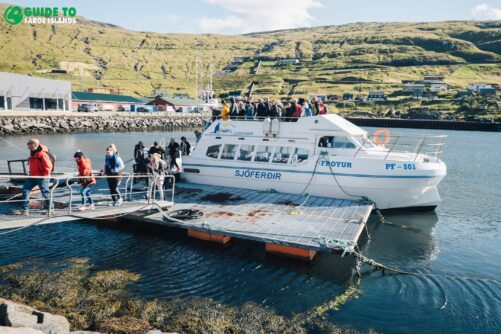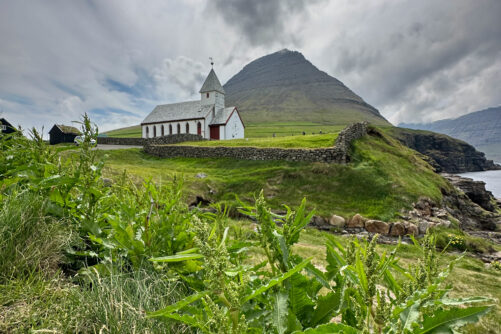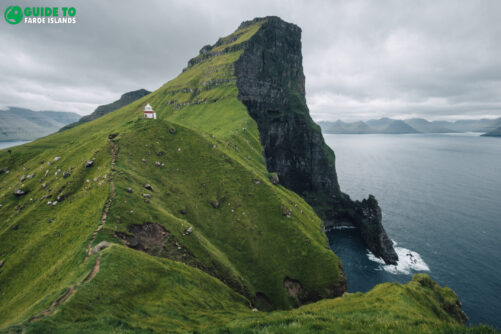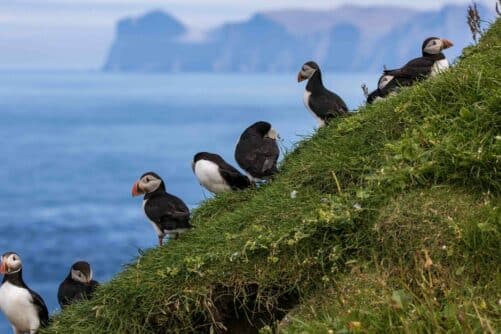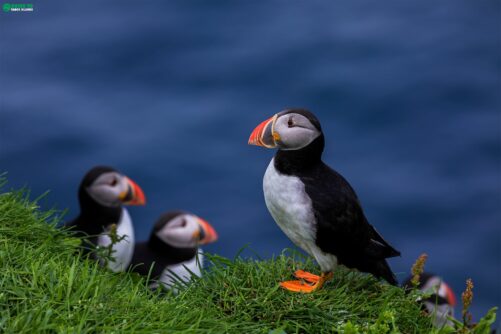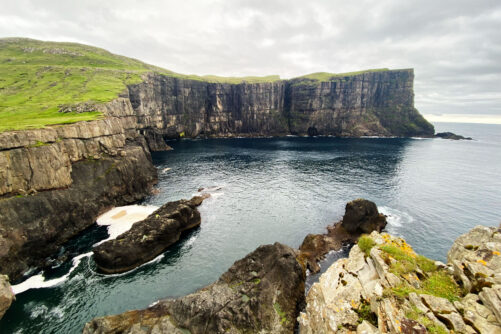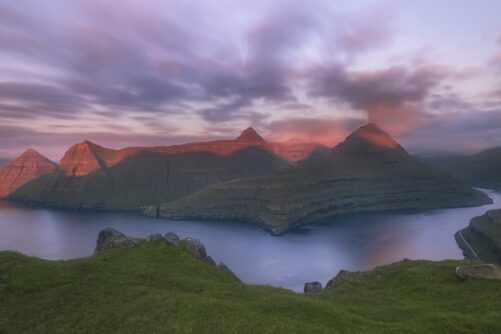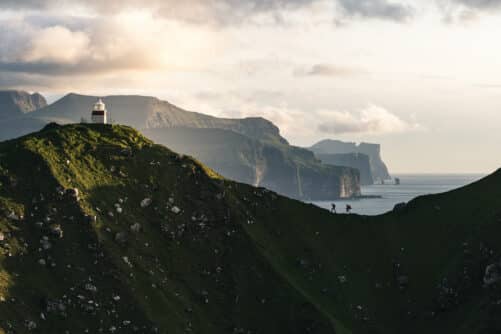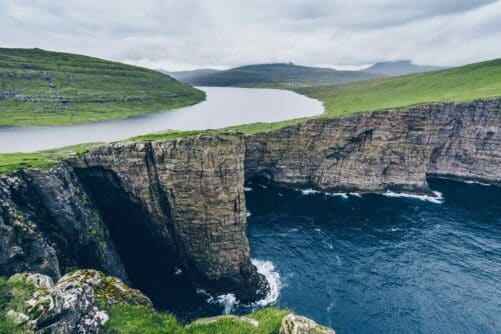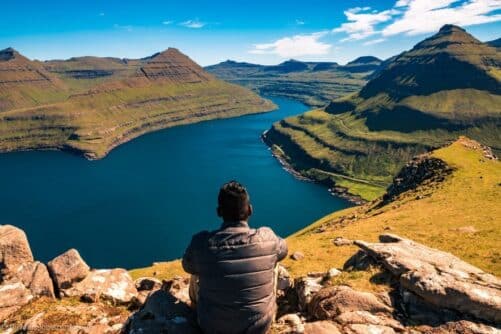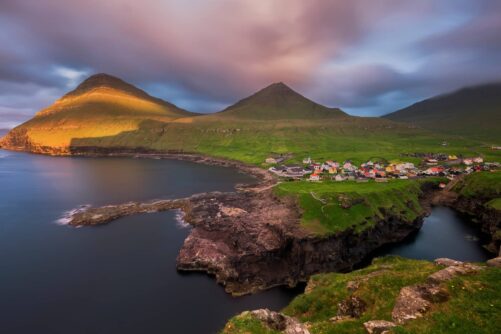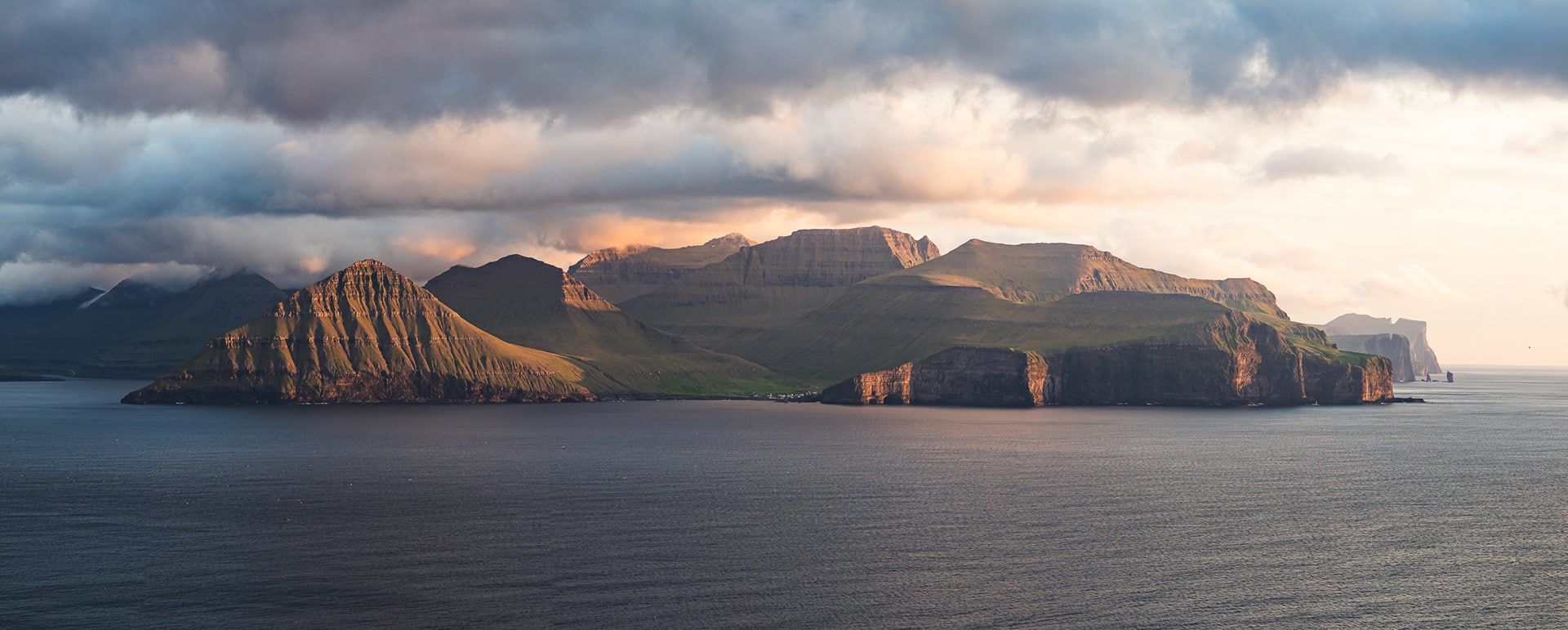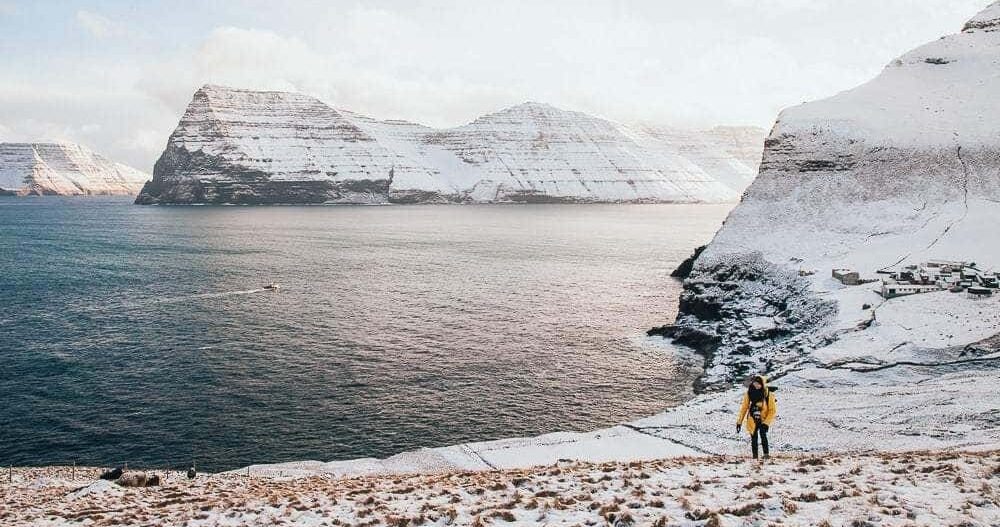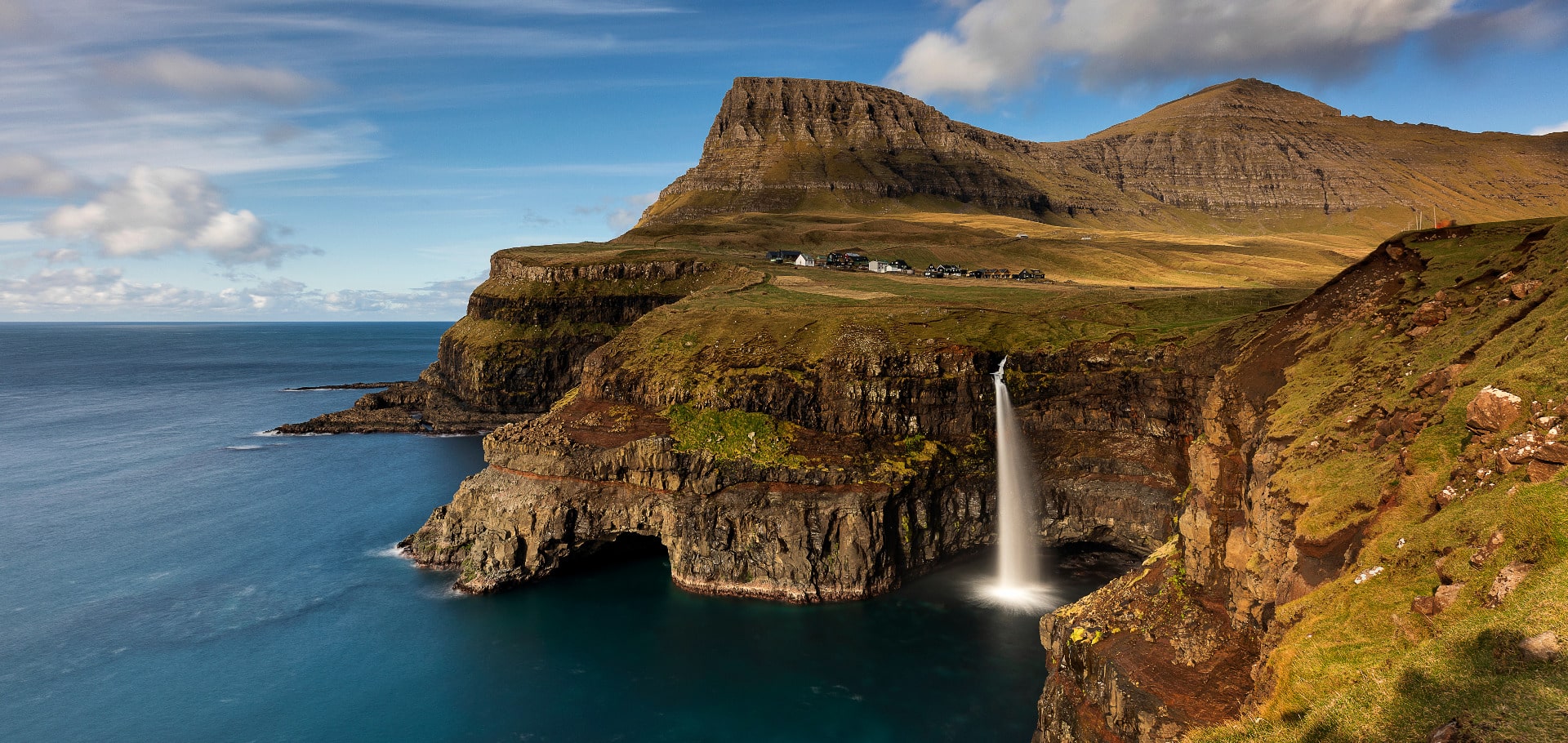

The Best Winter Itinerary for Faroe Islands
Is Faroe Islands worth visiting in winter? What is there to see and do in the winter months? What is the weather like during winter? Read ahead and get to know the ultimate winter itinerary designed for those who want to explore the very best of what the Faroe Islands have to offer in winter.
- Get about the Faroe Islands by Renting a Car
- Explore the best of Faroe Islands by booking a Winter Package
- Ensure that you know What to Pack for Travel in Faroe Islands
- Read about Faroe Islands in December and in January
This 6-day winter itinerary takes you to the top attractions on the far-flung Faroe Islands. You will experience epic sceneries on Vagar Island and the soaring mountains in the northern islands like the gloriously nestled village Viðareiði.
The itinerary provides you with everything you need when planning a trip to the Faroe Islands in winter from how to get around to what to pack. You will make the most out of your travel in the Faroe Islands in winter by following this itinerary.
Uncrowded Faroe Islands Winter Itinerary
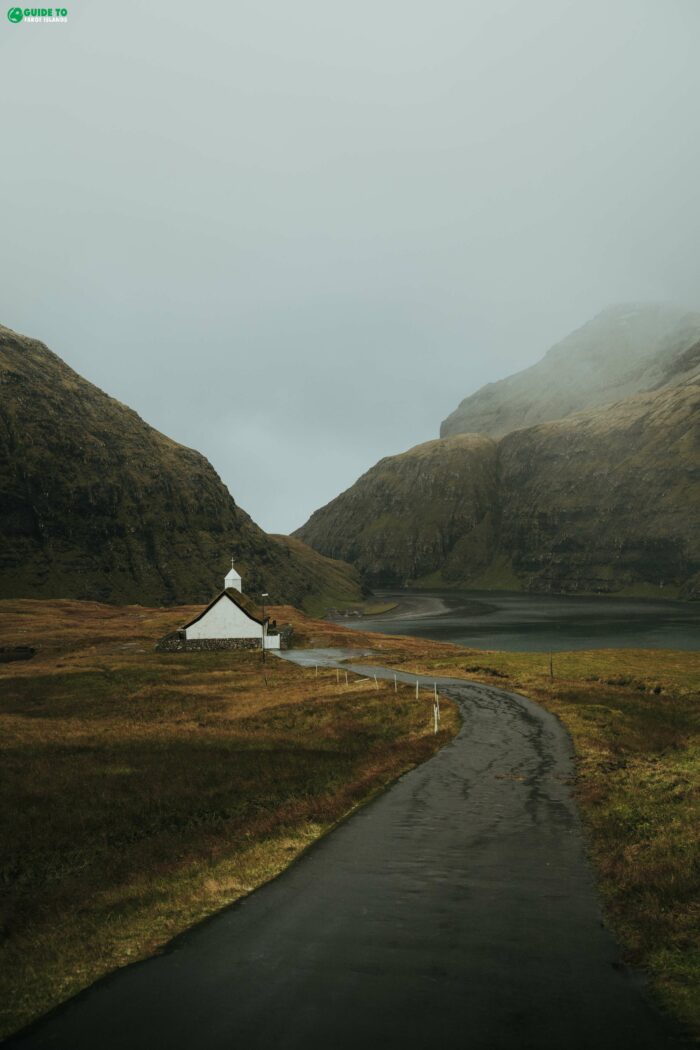
Faroe Islands in winter ticks all the boxes you are looking for in a holiday this time of the year. It will unveil the wonders of the islands and give you captivating experience.
The first thing that you should know when visiting the Faroe Islands this time of year is that you do not need as many days as you do in summer to cover the best of the Faroe Islands. Only few boat tours run in winter and some hiking trails are difficult to access due to slippery paths. However, do not worry, as there are still plenty of unbelievable sight to explore between the winter months from October to March.
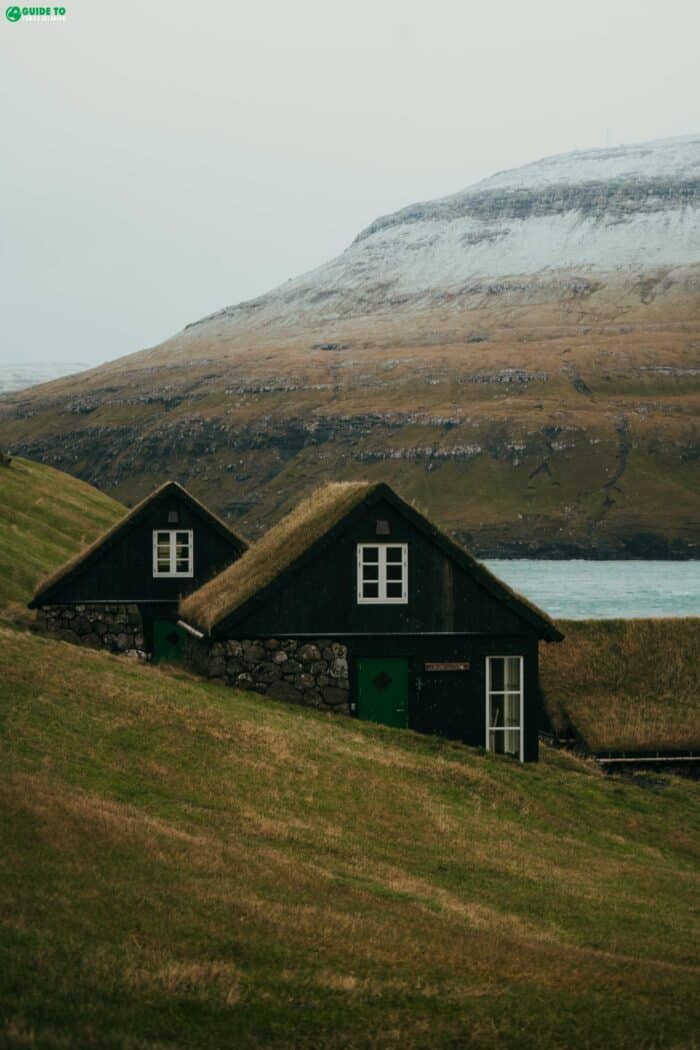
Faroe Islands in winter means low season. There are almost no tourists in winter so you will have the many unspoiled sights for yourself. Hotels and Airbnb accommodation are also cheaper in winter.
If you want to stay in a hotel while you are in the Faroe Islands, make sure to stay in the capital, Tórshavn. It is easy to go for day trips and sightsee from the capital. Most restaurants are also in Tórshavn.
Expect windy days and expect rain too. The average temperature in winter is 3,5 °C (38 °F).
Day 1 – Vágar Island

Welcome to the Faroe Islands! You will land at Vagar Airport, which is the only place in the country where flights descends and land. Make sure to rent a car, as there are very few guided day tours on offer during winter due to a very small number of travellers in the dark winter months.
Car rental companies offer pick up at the airport. The awesome thing is that rental cars are much cheaper this time of the year.
- See also: the largest selection of Car rental in the Faroe Islands
You will do just fine renting a small or medium car in winter. The road system is good and well maintained so there is no need to book a 4×4. Your first day in the Faroe Islands will take you to some key highlights.
Gásadalur

Once you have the keys for your vehicle, fasten your seatbelt and head directly to the village Gásadalur. It takes only 20 minutes to drive from the airport to this tiny village. Park your car once you reach the valley where the village is nestled.
Now, after a 2 minutes’ walk, you will get to the most famous waterfall in the archipelago, the Múlafossur Waterfall. This fall drops from the edge of the village and directly into the Atlantic Ocean.
Bøur
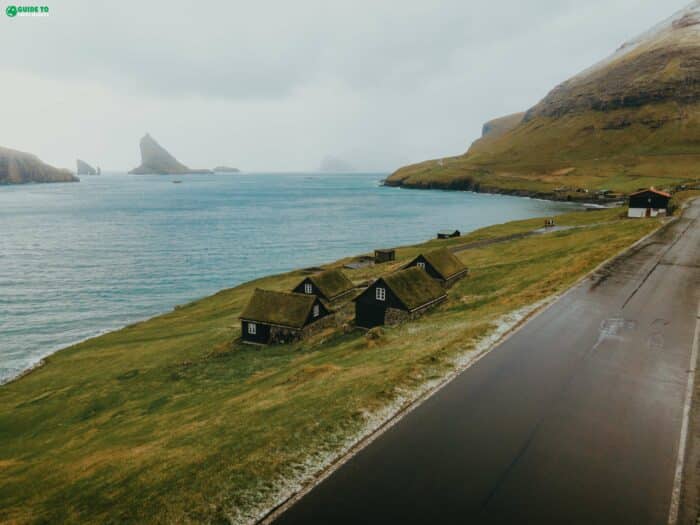
After visiting Gásadalur, step into your car and drive for 15 minutes to the turf village Bøur. Here you will have a great view of the epic islet Tindhólmur and the sea arch Drangarnir. Enjoy the village alike by going on a stroll between the small houses several of them covered with grass on the roof.
You can even get close to the mesmerising Drangarnir sea arch. Check out this boat tour to Drangarnir. The tour departs form the fjord village Sørvágur.
Trælanípa Cliff
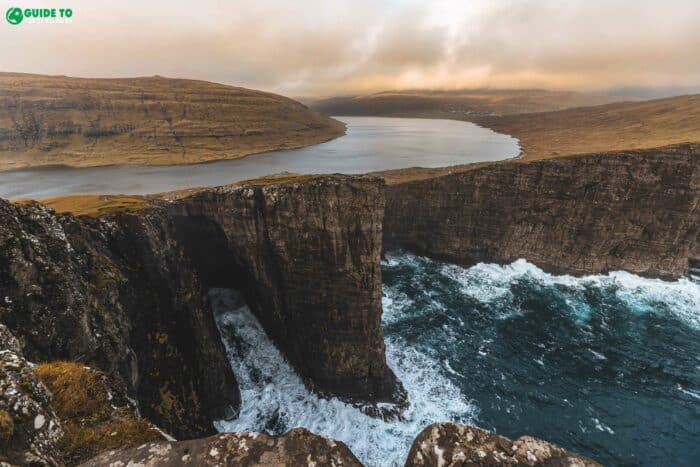
If you have an early inbound flight, there will still be some time to spend on Vágar island. Go for the classic 3-hour hike to Trælanípa Cliff from where you will experience the Lake Above the Ocean.
At the top of the cliff you will see both the ocean and Lake Leitisvatn above at the same time. Simply take the scenic and easy route up the mountain side from the trail head in the village Miðvágur.
Afterwards you can take a seat at the cosy restaurant Fiskastykkið in the village Sandavágur. Here you can order fresh seafood from the menu. There is also an easy 30 minutes walk from the restaurant to the Trøllkonufingur rock formation that stands beautifully by the cliffside.
The ride from Vágar island to Tórshavn will take you just above 30 minutes without stop along the way, which can be quite difficult to avoid as the sceneries are amazingly spectacular. Vágar island ad the neighbouring island Streymoy are connected by a sub-sea tunnel.
Day 2 – Streymoy Island

Today, you will experience some of the main attractions on the largest of the 18 islands that make up the untouched Faroe Islands. Today’s tour will take you to the historic treasure in Kirkjubøur, to the quaint settlement Saksun as well to the largest waterfall Fossá.
Start the day by heading to Kirkjubøur on the western side of the island. Here you will see lots of turf houses as well as the oldest church in the Faroe Islands dating back to the 13th century.

Once you have experienced Kirkjubøur and the historic sights there, take the route to Saksun. The village is situated in spectacular surroundings. There is a tidal lagoon, an iconic white church and steep mountainsides.
Now, head further north first to Fossá Waterfall and then to the peaceful settlement Tjørnuvík. All these attractions are stunning and can all be reach in winter with ease.
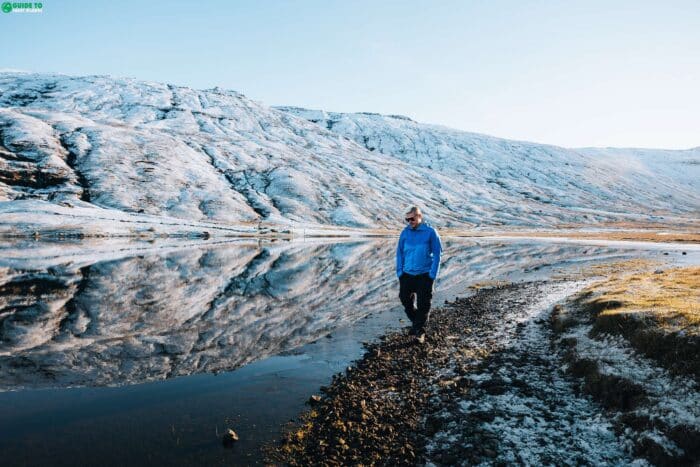
While you are on the road, you might also find time for a walk along Lake Leynavatn. This freshwater lake is one of the most beautiful lakes in the Faroe Islands.
You can walk here all year round. There are actually three lakes here, from very small lakes to Lake Leynavatn. You can park next to the mountain tunnel Leynatunnilin. As you find your way along the lake, slow down and give yourself time to take in the tranquility of the place.
Day 3 – Eysturoy Island
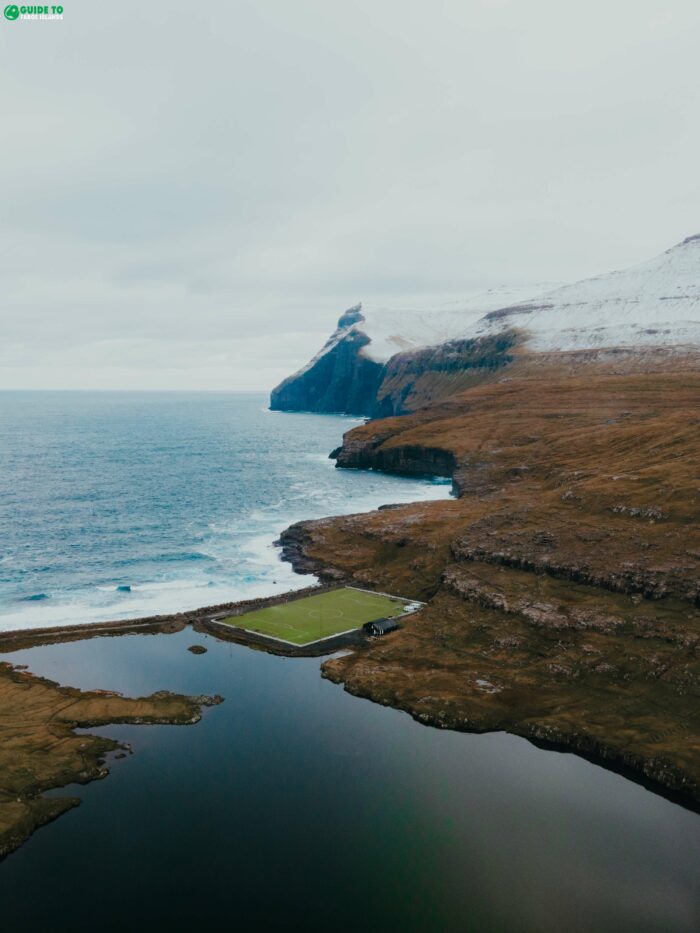
Get ready for a full day of Eysturoy Island. Before you venture out to this island that is connected to Streymoy by a short bridge, make sure to read the ultimate guide to Eysturoy Island.
There are two ways to get to Eysturoy Island from Tórshavn. You can either take a shortcut by driving through the Eysturoyartunnilin underwater tunnel or cross the bridge at the Sundini Strait. The first option comes with a tunnel toll charge whilst the latter option is free.

We recommend you to opt for the bridge in the morning and then take the underwater tunnel when heading back to Tórshavn. Once you cross the bridge to Eysturoy island, make it to the northernmost part of the island where you will find the village Eiði.
Have a look at calm village and afterwards head up towards Slættaratindur, the highest mountain in the Faroe Islands. After a kilometre or so from Eiði, you will get a really good view of the football field in the village that lies in unmatched surroundings.
Gjógv & Funningur
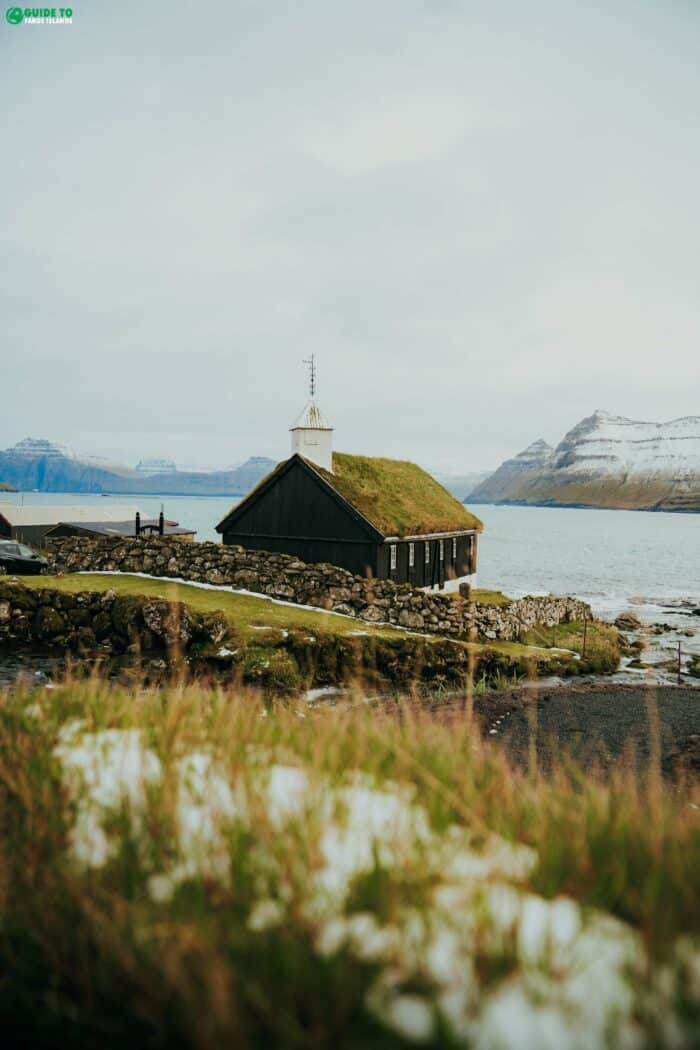
After visiting Eiði, head to the tidy settlement Gjógv where you will see the brobdingnagian gorge that has given the village its name. Gjógv is full of charm and is nestled in a beautiful valley. There are quite many windy days in the winter, which will give you a great opportunity to enjoy the shoreline and the surf there.
Once you have been to Gjógv, stop by the Gjáarskarð mountain pass. Here you can go for a short walk to the vantage point Hvíthamar. This place comes with outstanding fjord views and more. Next, stop by the small village Funningur. You will for sure enjoy the picturesque grass-roofed church in the settlement.
Day 4 – Borðoy Island, Kunoy Island & Viðoy Island
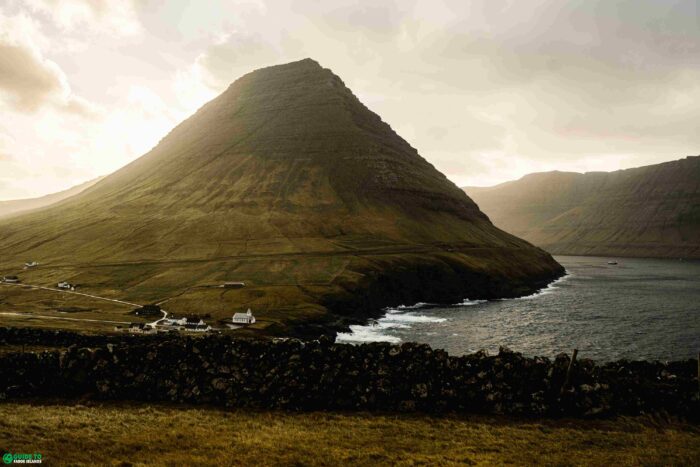
On your fourth day in the Faroe Islands, you will experience three islands in the northern part of the country. Get excited as you approach Borðoy Island, Kunoy Island and Viðoy Island.
In order to reach Borðoy Island, you will pass a subsea tunnel from the village Leirvík on Eysturoy Island. Both Kunoy Island and Viðoy Island are connected to Borðoy Island by causeways that sit brilliantly in the North Atlantic ocean.
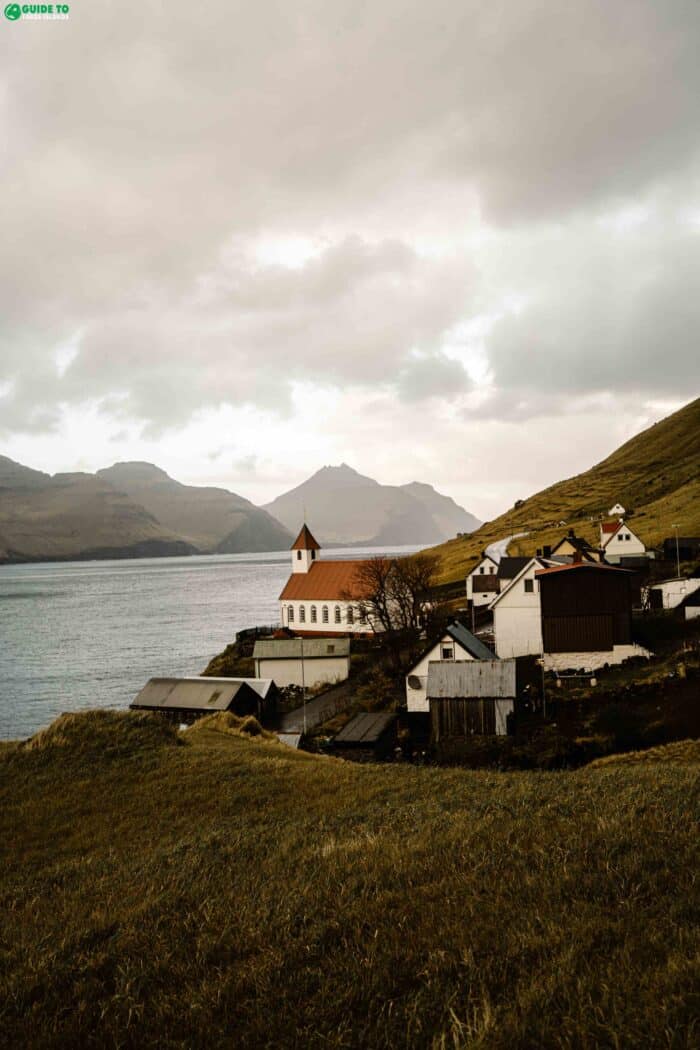
The islands in the northern part of the archipelago are known for their towering heights. Witness the majestic views from Viðareiði and remember to stop by the unspoiled fjord Árnafjørður that lies well hidden between the mountain sides. Viðareiði is the best spot to chase the Northern Lights in winter.
There are more tunnels in the northern isles than anywhere else in the island group. Tunnels in the Faroe Islands make it easy to get around. When you drive to the settlement Kunoy on Kunoy Island, you will drive through one of the mountain tunnels connecting settlements together. Same goes when visiting Viðareiði on Viðoy Island.
Day 5 – Suðuroy Island
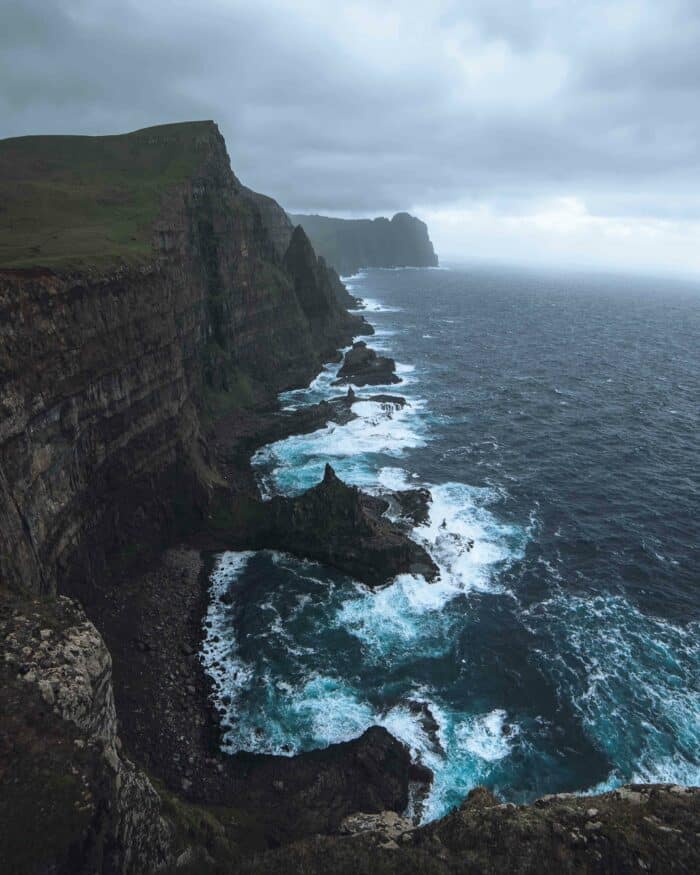
Today, you will take the longest ferry ride that can be taken between two islands in the Faroe Islands. Park your car in the line at the harbour in Tórshavn where you will wait to get on-board the passenger ferry Smyril to Suðuroy Island. The southernmost island really holds some magic spots in the Faroe Islands.
It takes two hours to sail to Suðuroy. Along the way, you will pass the smallest of the 18 island, Lítla Dímun. When you get to Suðuroy, make sure to drive around the island, which has an excellent road system from the southernmost village Sumba to the most northernly settlement Sandvík.
Day 6 – Farewell to the Faroe Islands Winter Itinerary
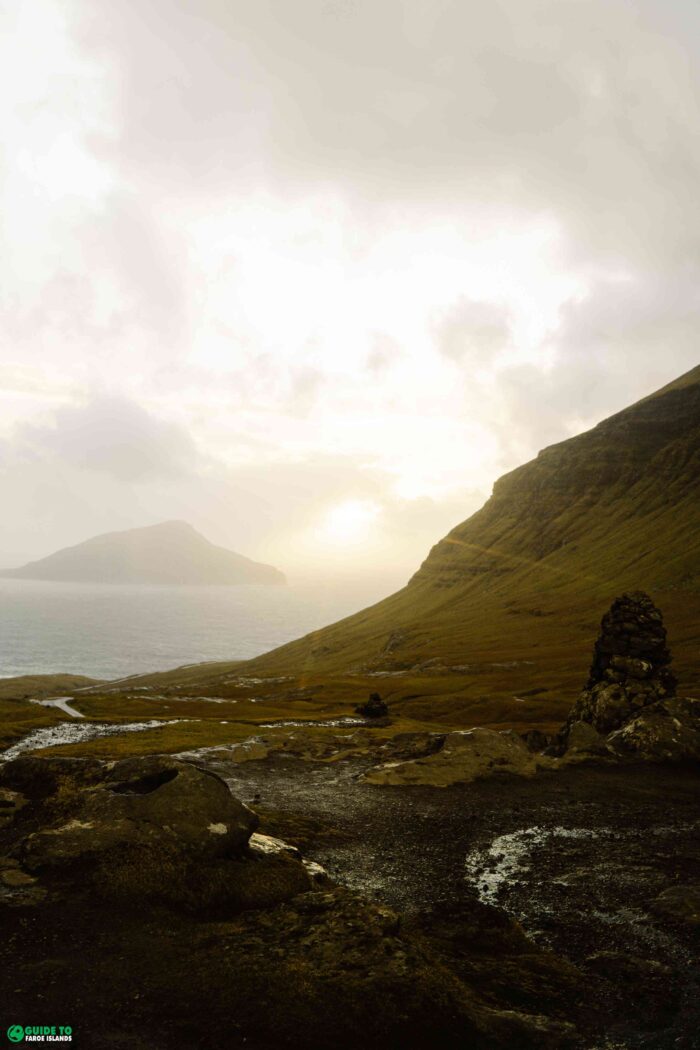
Take a last walk in the city of Tórshavn before you leave the breathtakingly beautiful islands. If you have a late outbound flight, you can go for some extra sightseeing on the Oyggjarvegur road, which leads you out of the capital. This is the old mountain road with way less traffic than the main gateway to Tórshavn.
Along the Oyggjarvegur route you can stop by Norðradalsskarð mountain pass where you will have a magnificent view of Koltur island inhabited by a single person. Make sure to stop by the only prison in the Faroe Islands located far away from everything up on a hillside with gorgeous view of the Kaldbaksfjørður fjord.

Travelling to the Faroe Islands in off-season is for those people that are different, people with personality and character. You will be secured scenic terrains and breathtakingly amazing landscapes. Most of all you will greet the great outdoors and recharge.
There is nothing like escaping the crowds and enjoying untouched nature. That is what a Faroe Islands winter vacation will secure you.
Are you planning a winter getaway to the Faroe Islands? Check Flights to the Faroe Islands and take the next step.

